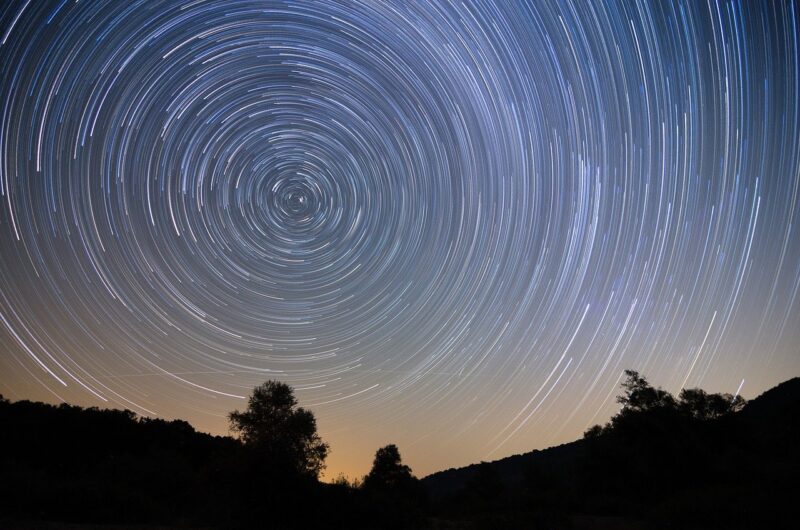The Fascinating History of Astronomy and How We Measured Stars in the Past
November 12, 2024

Astronomy has captivated humanity since ancient times. The inquisitive nature of human beings led to the study of celestial objects, as our ancestors looked up towards the shimmering night sky. In recent decades, detailed studies of historical astronomical methods have illuminated how civilizations across time have explored and quantified the heavens. In this article, we delve into the fascinating history of astronomy, showcasing how ancient cultures measured the stars and improved our understanding of the universe.
1. The Beginnings of Astronomy: A Window to the Night Sky
The origins of astronomy can be traced back to prehistoric humans who observed the night skies. Ancient cultures looked for patterns among stars, identified constellations, and tracked celestial phenomena like eclipses and the shifting of the seasons. Evidence suggests that the Babylonians were among the first to systematically document celestial observations, creating detailed records of astronomical events as early as 1,800 BCE.
The Babylonians devised a base-60 numerical system, which we still use today for measuring time. Their sophisticated sky maps allowed them to predict celestial occurrences, such as lunar eclipses, and laid the groundwork for future astronomical studies.
2. Ancient Civilizations and Their Astronomical Techniques
Different cultures each contributed unique techniques for celestial measurement. Here’s an overview of some notable civilizations:
- Egyptians: The Egyptians built massive pyramids aligned with celestial bodies. The Great Pyramid of Giza is oriented with incredible precision toward the cardinal points. Egyptians also divided the sky into 36 star groups, known as ‘decans’, which were used to gauge time during the night.
- Greeks: Greek astronomers like Hipparchus and Ptolemy significantly advanced astronomy. Hipparchus developed a star catalog and introduced the concept of latitude and longitude, while Ptolemy’s ‘Almagest’ synthesized the knowledge of his predecessors, elaborating on a geocentric model of the universe. They measured the brightness of stars with a magnitude scale that we still reference today.
- Indian Astronomers: Indian scholars contributed mathematical techniques to the field of astronomy. Aryabhata, around 500 CE, proposed that the Earth rotates on its axis and suggested approximations for pi and the circumference of the Earth. His work influenced future astronomical understanding across the globe.
- Chinese Astronomers: China boasts a rich astronomical tradition with detailed records of supernovae and comets dating back to 5,000 years ago. The famous ‘Book of Han’ recorded the first observations of Halley’s Comet in 11 BCE. Their use of the gnomon allowed them to measure the angle of the sun, aiding the understanding of time and celestial movements.
The efforts of these civilizations reflect our growing desire to comprehend the cosmos. As technology and philosophical insights developed, so too did approaches to mapping and measuring stars.
3. The Middle Ages: A Period of Preservation and Advancement
The Middle Ages experienced challenges due to significant societal shifts. However, during this period, the translation and preservation of ancient Greek and Arabic texts contributed greatly to the field of astronomy. Scholars in the Islamic Golden Age, such as Al-Battani and Copernicus, refined observational techniques and further advanced the understanding of the solar system.
Al-Battani improved trigonometric methods, leading to the creation of accurate astronomical tables that predicted celestial events with remarkable precision. His influence set the stage for later European Renaissance astronomers, whose work ultimately challenged the long-held geocentric views.
4. The Renaissance: Revolutionizing Astronomy
The Renaissance brought about a seismic shift in astronomy, primarily marked by the introduction of the heliocentric model, which posited that the Earth and other planets revolve around the sun. This transformative perspective was championed by Copernicus, whose groundbreaking publication ‘De revolutionibus orbium coelestium’ reshaped our understanding of the universe in 1543.
In addition to Copernicus, figures like Galileo Galilei and Johannes Kepler made significant contributions:
- Galileo’s Telescope: Galileo’s innovative use of the telescope allowed him to observe celestial bodies like Jupiter’s moons and the phases of Venus, providing undeniable evidence for the heliocentric model. He meticulously documented his findings, reinforcing the accuracy of astronomical measurement.
- Kepler’s Laws: Johannes Kepler formalized the laws of planetary motion, which revealed that planets move in elliptical orbits. His work on the mathematics of motion further solidified the scientific method in astronomy by incorporating observation with empirical data.
The Renaissance not only transformed how we viewed the universe but also fundamentally influenced methods of measuring celestial bodies, paving the way for future observational techniques.
5. The Age of Enlightenment: Precision Instruments and New Discoveries
During the Age of Enlightenment, advancements in technology allowed astronomers to hone their observational tools. The invention and refinement of the telescope set the stage for new astronomical discoveries:
- Newton’s Work: Isaac Newton’s theories of gravitation explained the mechanisms regulating celestial bodies’ movements, providing a framework that helped accurately measure distances between stars and planets.
- The Astronomical Unit: The establishment of the astronomical unit (AU), representing the average distance from the Earth to the Sun (approximately 93 million miles), allowed astronomers to reference distances within our solar system effectively.
- Sidereal Time and Accurate Measurements: Astronomers began to adopt sidereal time—tracking time based on the stars rather than the sun. This precision allowed for better tracking of celestial events and aided navigators who relied on astronomy to explore terrestrial trade routes.
These advancements bridged the gap between observation and scientific inquiry, ultimately leading to the creation of comprehensive star catalogs and mapping the night sky.
6. Modern Astronomy: Digitalization and the Universe Unveiled
Today’s astronomy is marked by groundbreaking technologies, such as space telescopes and powerful digital tools that enhance our understanding of the cosmos. The advent of CCD cameras and spectrographs has revolutionized astrophysics, enabling astronomers to capture and analyze distant stars, galaxies, and particles from the far reaches of space.
The discovery of exoplanets and other celestial phenomena has transformed astronomy into a highly interdisciplinary field, intertwining with physics, chemistry, and geology. Modern astronomers employ complex mathematical models and data analytics to unravel the mysteries of the universe and explore incredibly far-off celestial objects.
Furthermore, developments in robotics and artificial intelligence promise advancements in observational precision, linking centuries of human curiosity and innovation to future generations’ quest for knowledge.
Conclusion: A Journey Through Time
The history of astronomy reveals a continuous thread of human curiosity that spans centuries, from ancient civilizations charting the stars to modern astronomers unveiling the mysteries of the universe. Each era contributed to our growing understanding of celestial measurements, evolving tools, and scientific methodology.
As we look to the future, the exploration of astronomy will continue to resonate with humanity’s search for meaning, challenges, and a deeper connection to the cosmos. With each discovery, we stand on the shoulders of those who dared to look up and ponder the secrets that lay among the stars.
Together, as a global community, we continue to push the boundaries of what we know, making remarkable strides forward in our astronomical journey, forever fascinated by the infinite wonders of the universe.







